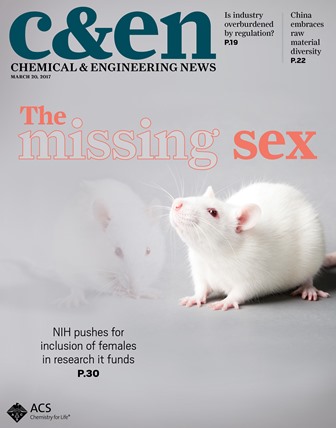FOR IMMEDIATE RELEASE
ACS News Service Weekly PressPac: March 22, 2017
Accounting for sex differences in biomedical research
"Are biomedical researchers forgetting females?"
Chemical & Engineering News
When it comes to health, a person’s sex can play a role. More women in the U.S. have autoimmune diseases than men, for example, whereas boys are more likely to be diagnosed with autism spectrum disorder than girls. Yet biomedical research on disease and possible new treatments often studies only one sex. The cover story in Chemical & Engineering News (C&EN), the weekly newsmagazine of the American Chemical Society, explores efforts to change this practice.
Michael Torrice, deputy assistant managing editor at C&EN, notes that biomedical research has a long history of including only one sex of lab animals in studies, with males being the choice in many fields. Historically, some researchers have assumed that males and females don’t differ much in their basic biology. Others have worried that females’ estrous cycles would introduce too much variability, so they stuck with studying males. But, as an Institute of Medicine report pointed out in 2001, every cell has a sex, and sex differences start in the womb.
To try to account for the differences between males and females in biomedical research, the U.S. National Institutes of Health in 2016 started to require funding applicants to consider sex as a variable in their proposed research. Supporters of the policy say it’s a step in the right direction. But some scientists are concerned that the policy will add to the cost of research, ignore the role of social and psychological variables, and lead to subpar data.
Note: ACS does not conduct research, but publishes and publicizes peer-reviewed scientific studies.


